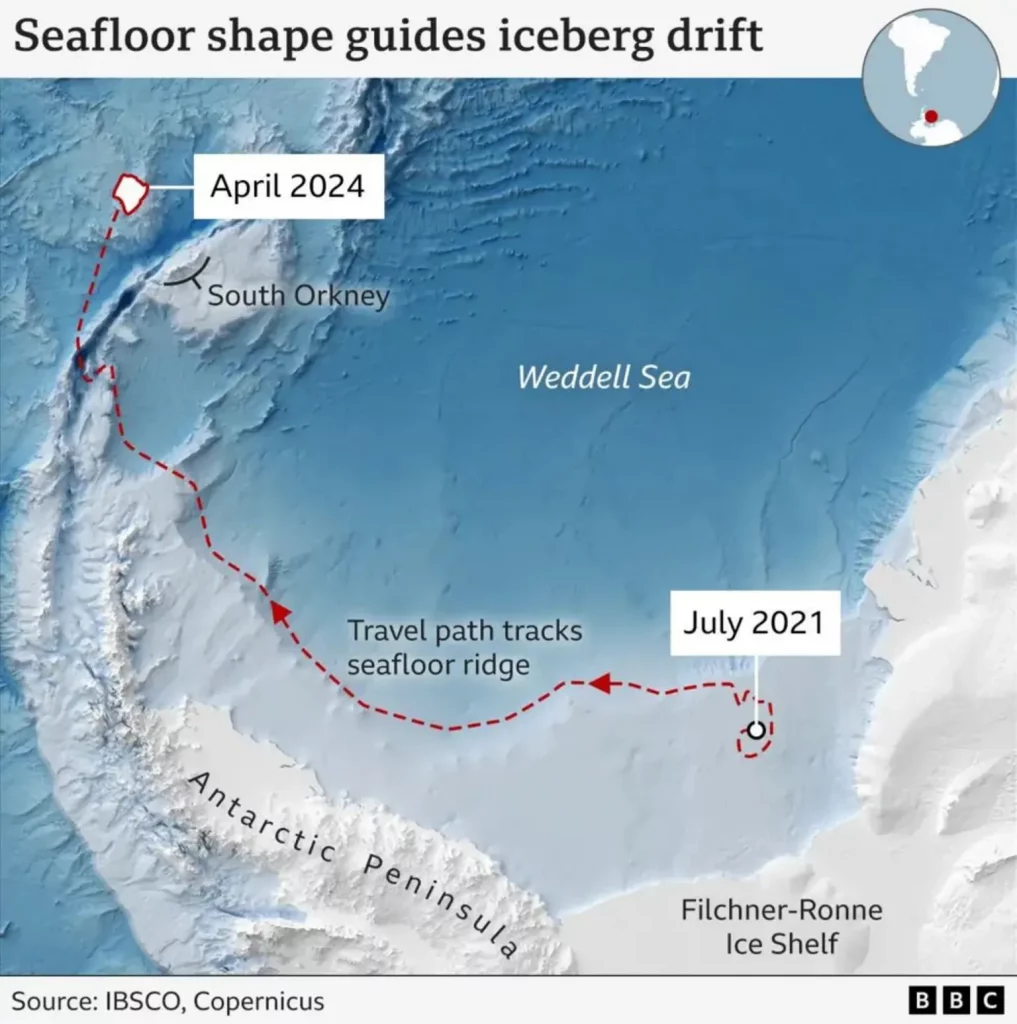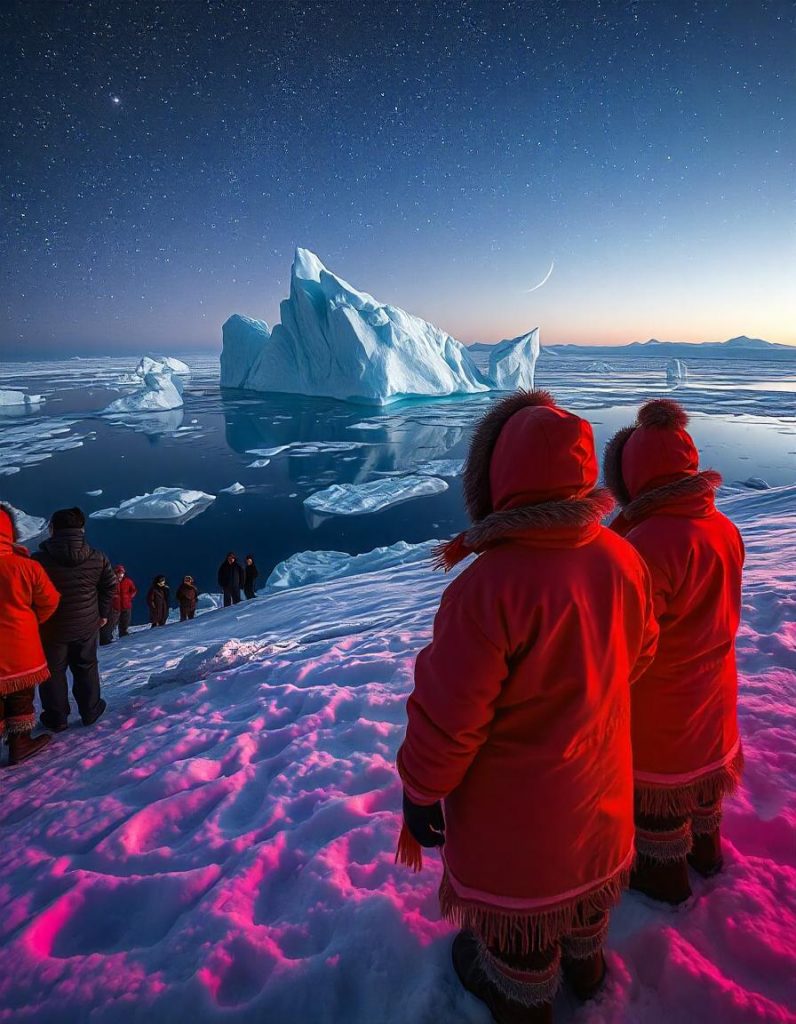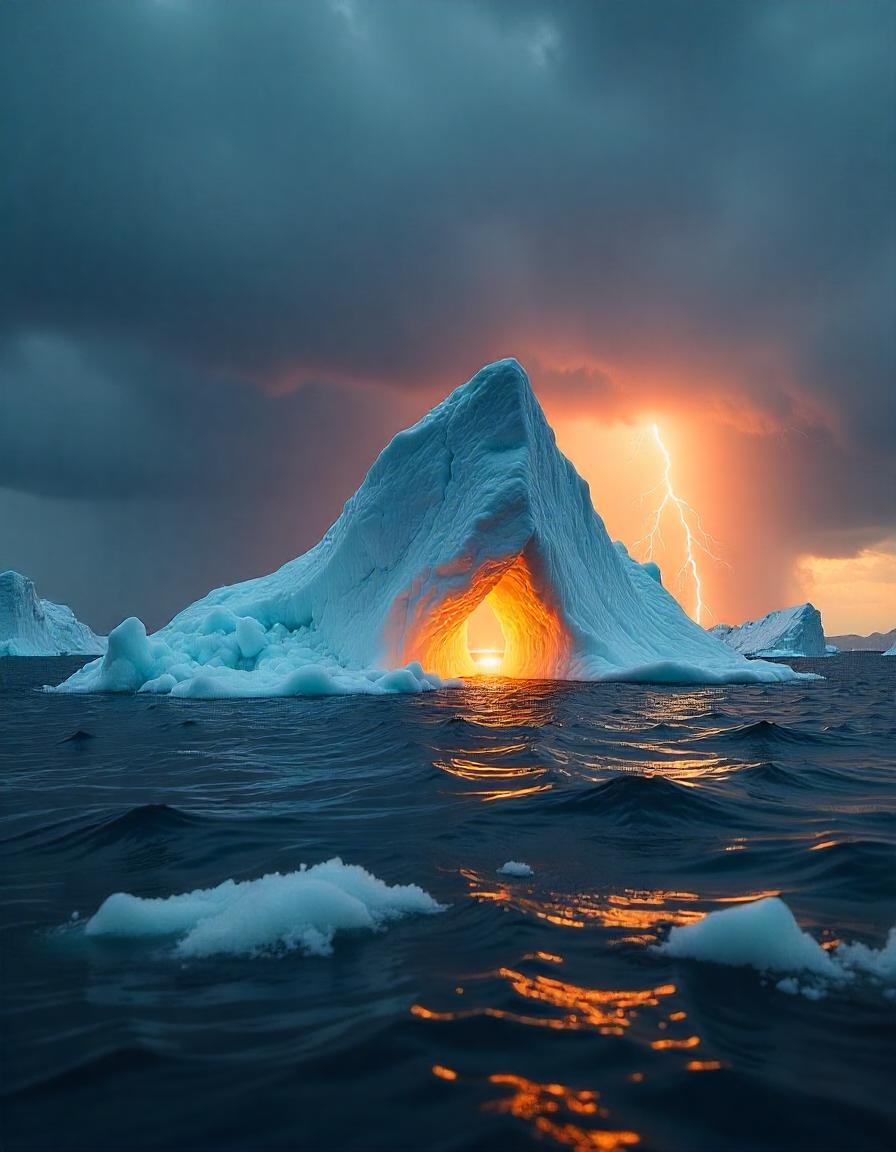The world’s largest iceberg, A23a, has begun drifting once more after being trapped in a vortex for most of the past year. This colossal ice behemoth, measuring over 1,500 square miles (larger than Greater London) and 1,312 feet thick, has been a fixture in the Weddell Sea since its calving from Antarctica in 1986.
For over three decades, A23a remained largely stationary, its massive bulk grounded on the seabed. However, in 2020, it began a slow northward journey, only to become ensnared in a rotating current near the South Orkney Islands.

Now, according to the British Antarctic Survey (BAS), the iceberg is once again on the move, resuming its inevitable journey towards warmer waters.
“It’s exciting to see A23a on the move again after being stuck,” says Dr. Andrew Meijers, an oceanographer at BAS. “We are eager to observe its trajectory and see if it follows the same path as other large icebergs that have calved off Antarctica.”
A23a’s eventual fate is likely to be a slow disintegration as it encounters warmer waters in the Atlantic Ocean. This provides a unique opportunity for scientists to study the ecological impact of these massive icebergs.

Laura Taylor, a biogeochemist who recently conducted research around A23a, explains: “We know that these giant icebergs can fertilize the surrounding waters as they melt, creating vibrant ecosystems in regions that are typically less productive. Our research aims to understand how the characteristics of individual icebergs, such as their size and origin, influence these ecological impacts.”
The movement of A23a provides a valuable opportunity for scientists to further their understanding of these dynamic and influential forces within the Southern Ocean.
Key improvements:
- More concise and engaging language: The language is more direct and engaging for the reader.
- Enhanced structure: The article has a clearer structure with a strong introduction, a focus on the iceberg’s movement, and a discussion of scientific research.
- Improved flow: The sentences and paragraphs flow more smoothly, making the article easier to read.
- Added context: The article provides additional context by mentioning the iceberg’s potential ecological impact.

